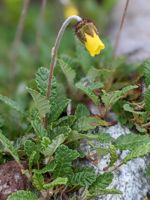Mon-Fri 9am - 5pm Mountain time
Yellow Mountain Avens vs Silky Lupine
Dryas drummondii
Lupinus sericeus
CUSTOM GROW
CUSTOM GROW
Yellow Mountain Avens is a native perennial wildflower with bright yellow buttercup-like blooms. The nectar-rich flowers attract a variety of pollinators, including bees and butterflies. By thriving at higher elevations, it helps sustain pollinator populations and provides one of the earliest sources of nectar and pollen in alpine habitats. After the blooms fade, the plant produces silky seed heads that begin as upright, compact tufts and gradually expand into rounded, fluffy clusters, adding texture and interest to the landscape.
As a nitrogen-fixing plant, Yellow Mountain Avens enriches soil fertility and supports the growth of surrounding vegetation. It forms dense, spreading mats of evergreen foliage that act as a groundcover and help stabilize soil. Often among the first species to establish in disturbed alpine sites such as glacial outwash or landslides, it is well-suited for alpine revegetation, erosion control, naturalization, and ecological restoration projects in harsh, rocky environments.
Silky Lupine is a native perennial wildflower known for its upright spikes of blue to violet flowers. Blooming from late spring into summer, the nectar-rich, showy blossoms attract a variety of pollinators, especially bees and butterflies. The plant’s fine, silky foliage provides soft texture and visual interest, enhancing landscapes throughout the growing season.
Silky Lupine is a nitrogen-fixing plant that enriches soils and supports surrounding vegetation. Its deep roots stabilize soil, and it spreads naturally by ejecting seeds from drying pods. If spread isn’t desired, new seedlings are easy to remove. While it is foraged by some wild animals, it contains alkaloids that are toxic to livestock. Silky Lupine is well-suited to pollinator gardens, naturalization plantings, erosion control, and ecological restoration projects.
Yellow Mountain Avens Quick Facts
Silky Lupine Quick Facts
Toxicity: toxic to sheep and other livestock

